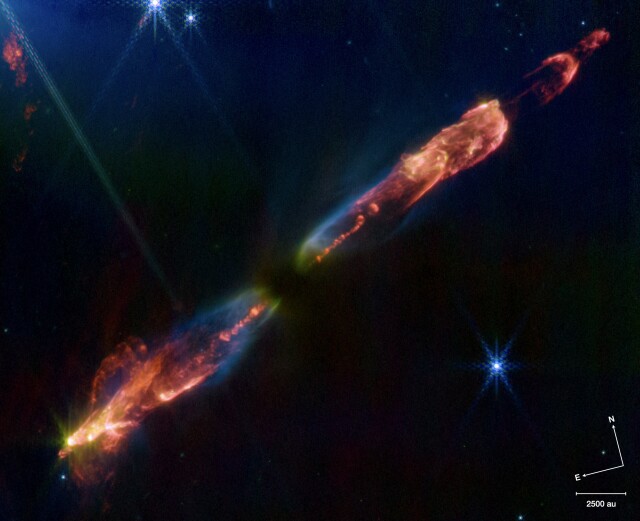It's paper time!
The first results from my #JWST time, in a project shared with Tom Ray et al. from the MIRI consortium, a study of the extremely young protostellar outflow, HH211, in Perseus, published in advance form in Nature today.
https://www.nature.com/articles/s41586-023-06551-1
Here's the headline image, a composite of three of the NIRCam filters we used.
#Astrodon #SpaceScience
The first results from my #JWST time, in a project shared with Tom Ray et al. from the MIRI consortium, a study of the extremely young protostellar outflow, HH211, in Perseus, published in advance form in Nature today.
https://www.nature.com/articles/s41586-023-06551-1
Here's the headline image, a composite of three of the NIRCam filters we used.
#Astrodon #SpaceScience
Outflows from the Youngest Stars are Mostly Molecular - Nature
Nature - Outflows from the Youngest Stars are Mostly MolecularNature
This entry was edited (1 year ago)

Mark McCaughrean
in reply to Mark McCaughrean • • •Turned out that the medium-band filters made for the best colour composites (mostly due to improved noise) – we've made a bunch & will show more later, but this is the one in the paper.
Mark McCaughrean
in reply to Mark McCaughrean • • •Mark McCaughrean
in reply to Mark McCaughrean • • •Mark McCaughrean
in reply to Mark McCaughrean • • •